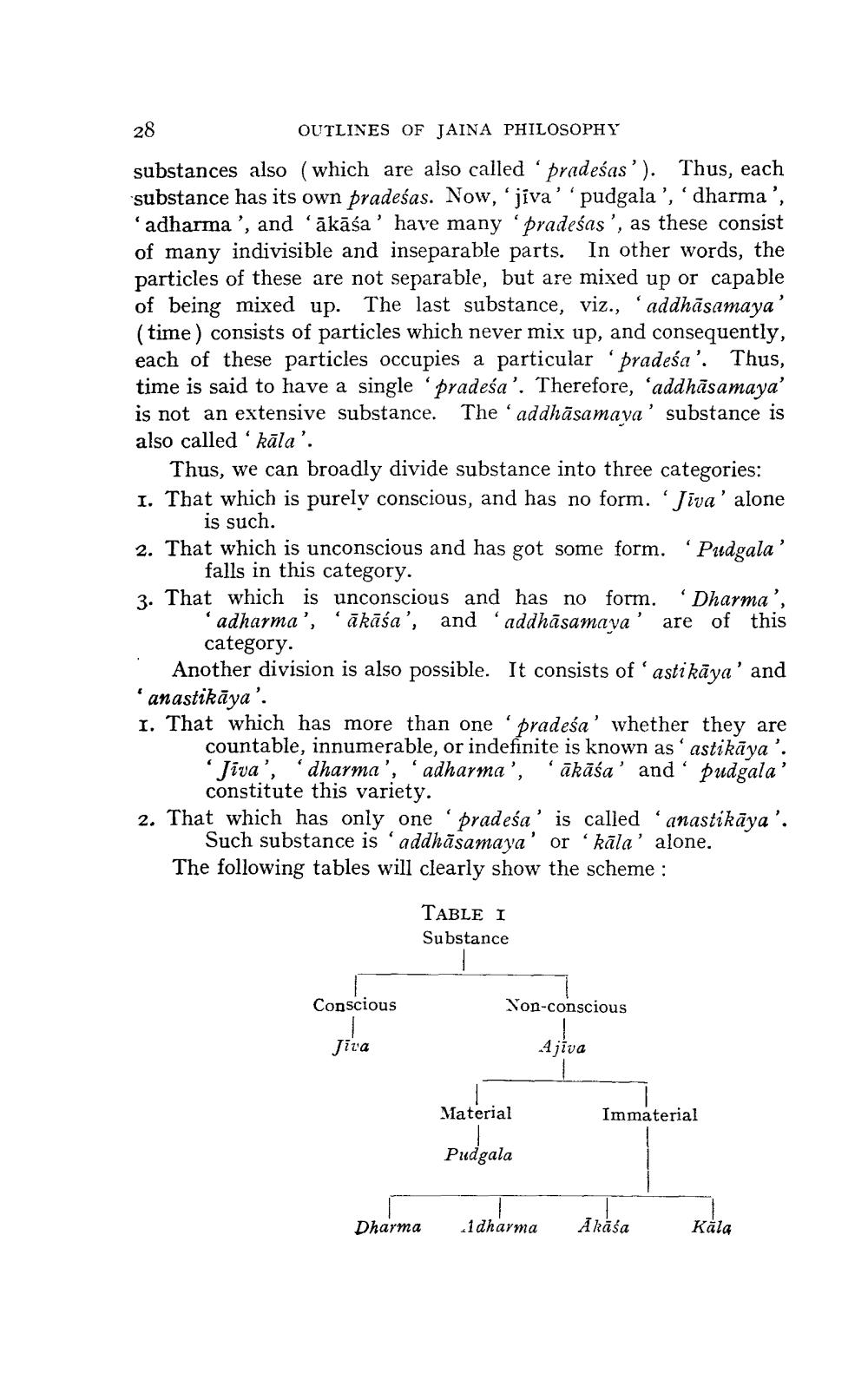________________
28
OUTLINES OF JAINA PHILOSOPHY
substances also (which are also called 'pradeśas'). Thus, each substance has its own pradeśas. Now, 'jiva'' pudgala ', 'dharma', 'adharma', and 'ākāśa' have many 'pradeśas', as these consist of many indivisible and inseparable parts. In other words, the particles of these are not separable, but are mixed up or capable of being mixed up. The last substance, viz., 'addhāsamaya' (time) consists of particles which never mix up, and consequently, each of these particles occupies a particular pradeśa'. Thus, time is said to have a single 'pradeśa'. Therefore, 'addhāsamaya' is not an extensive substance. The 'addhāsamaya' substance is also called 'kāla'.
Thus, we can broadly divide substance into three categories: 1. That which is purely conscious, and has no form. “Jiva' alone
is such. 2. That which is unconscious and has got some form. Pudgala'
falls in this category. 3. That which is unconscious and has no form. 'Dharma',
"adharma', 'ākāśa', and 'addhāsamava' are of this
category. Another division is also possible. It consists of 'asti kāya' and 'anastikāya'. 1. That which has more than one pradeśa' whether they are
countable, innumerable, or indefinite is known as 'astikāya'.
Jiva', 'dharma', 'adharma', 'ākāśa' and ' pudgala'
constitute this variety. 2. That which has only one pradeśa' is called 'anastikāya'.
Such substance is 'addhāsamaya' or 'kāla' alone. The following tables will clearly show the scheme :
TABLE I Substance
Conscious
Non-conscious
Non-conscious
Jira
Ajiva
Material
Material
Immaterial
immaterial
Pudgala
Dharma
1 dharma
Ārása
Kāla




